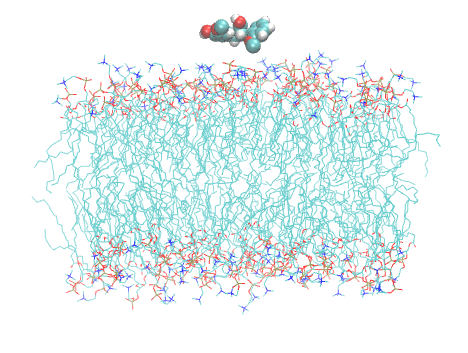Lignin dimer derivatives interacting with lipid bilayers

In this animation, a lignin dimer is seen entering a lipid bilayer. The lignin atoms are depicted as spheres, while the lipid molecules are translucent. The lignin is centered so that it only moves perpendicular to the bilayer in the animation. Water is not shown. An interactive version is here.
Lignin is a biopolymer that is abundant in nature and is mainly found in the cell walls of plants. Due to its natural biodegradability, biocompatibility, stability, and low toxicity, researchers are studying lignin derivatives for multiple pharmacological and biomedical purposes. Lignin and its derivatives have been proven to possess antioxidant and antibacterial properties and have been used to treat various diseases. Several studies have reported the use of lignin nanoparticles in drug delivery. In many of these applications, lignin either absorbs into or binds to cell membranes or membrane-embedded molecular structures like proteins. Therefore, it is crucial to investigate the interaction of lignin derivatives with cell membranes.